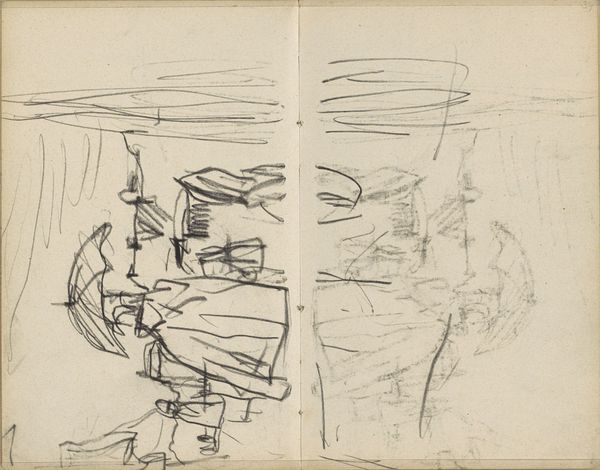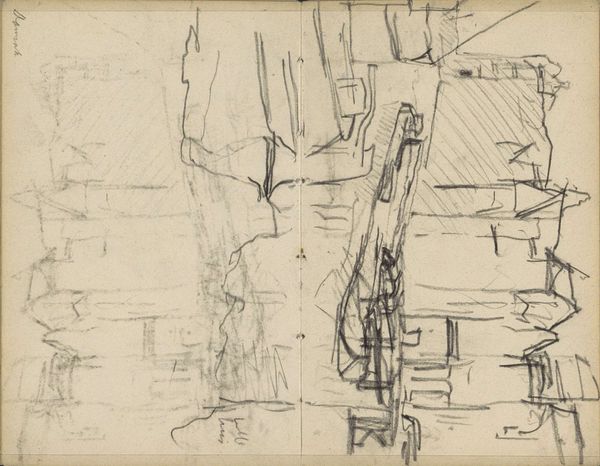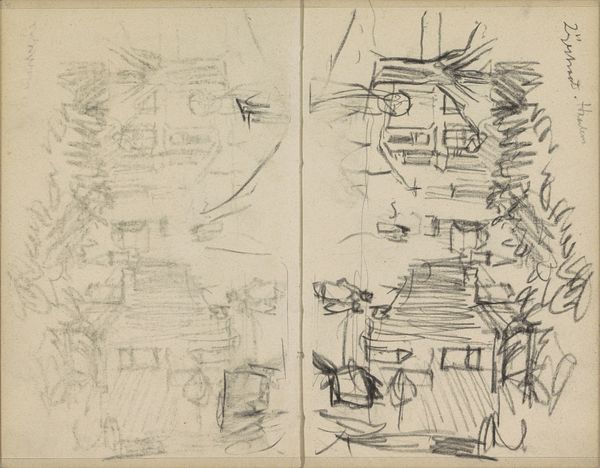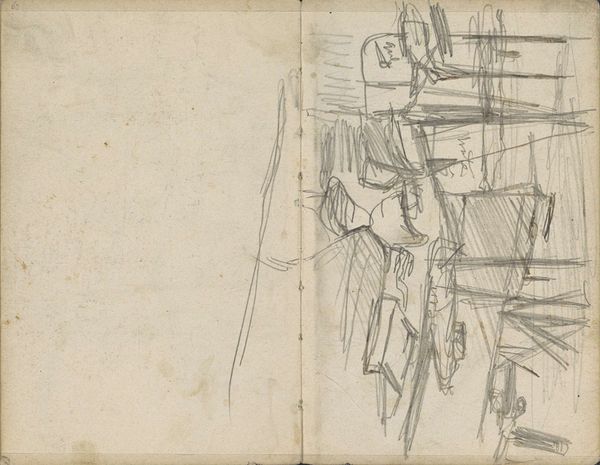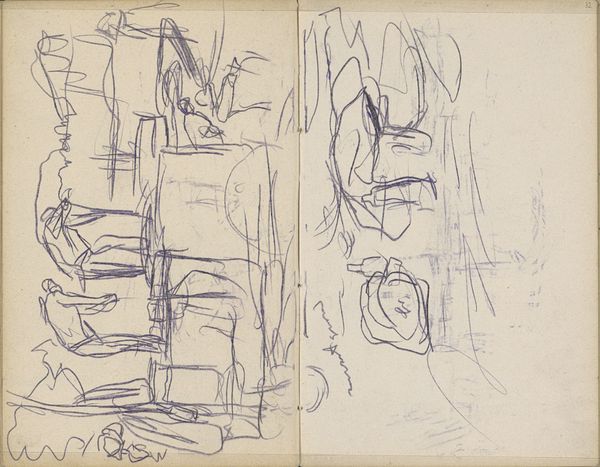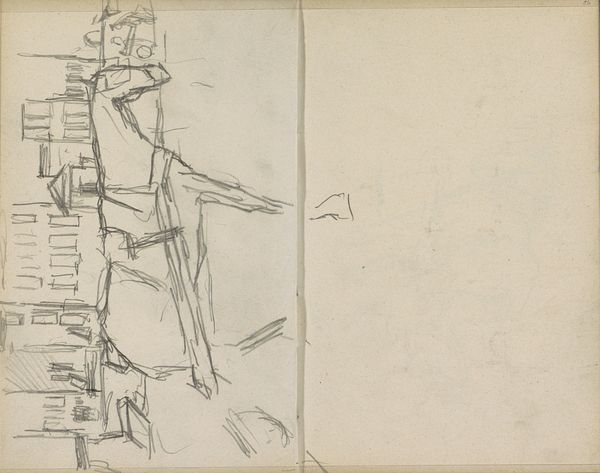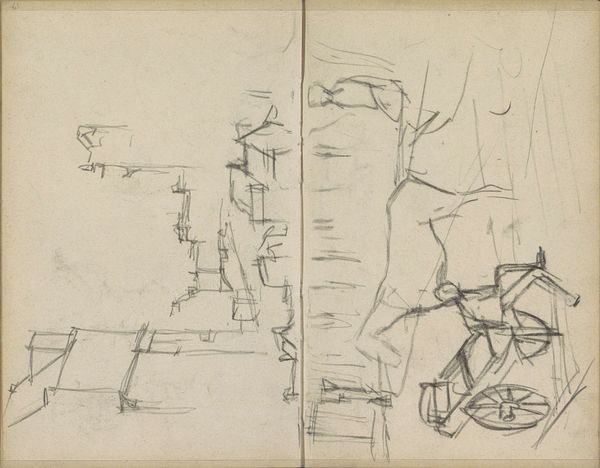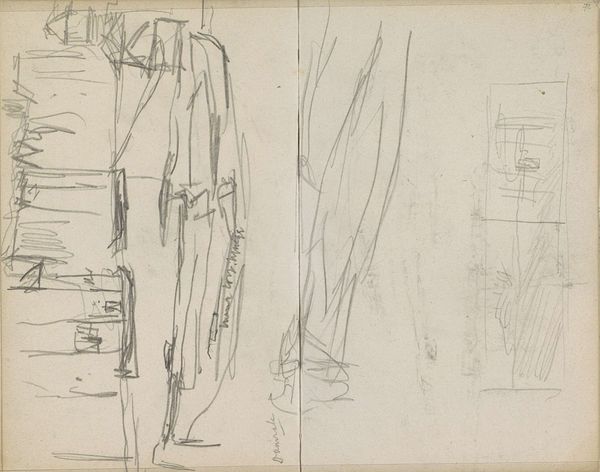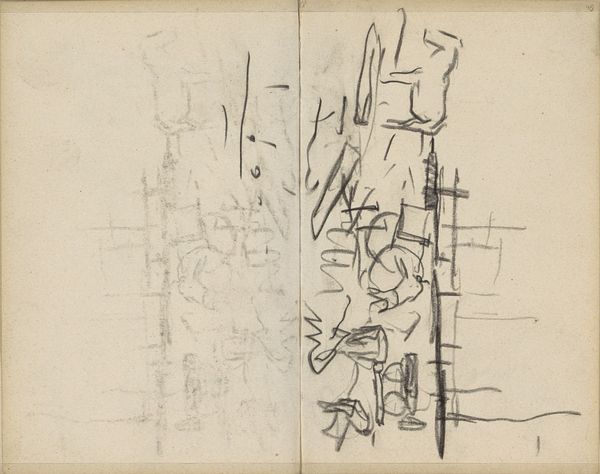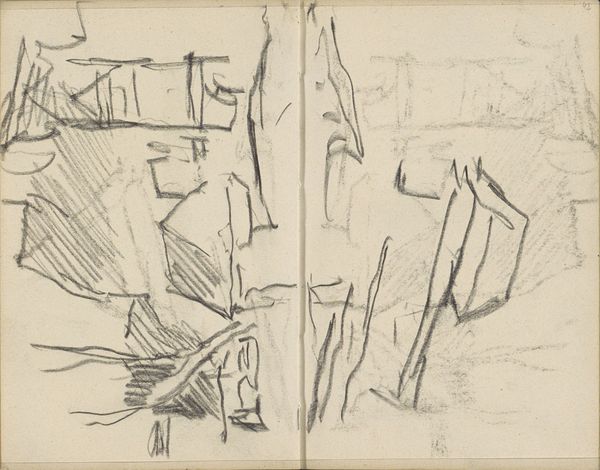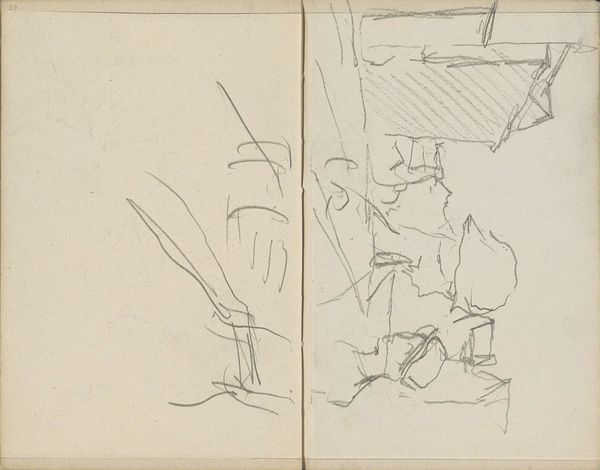
Copyright: Rijks Museum: Open Domain
Curator: My immediate impression is one of unfinished thought – a rapid capturing of the bustling Rokin in Amsterdam. Editor: Indeed, Breitner rendered this cityscape around 1907 in graphite and pen. "Gezicht op stratenmakers aan het Rokin te Amsterdam," provides us with a glimpse into daily life through the lens of modernism. The Rijksmuseum now holds it, a quiet testament to a vibrant past. Curator: The dynamism practically vibrates off the page! See how he uses line to create implied volume – forms emerging from a chaotic web of strokes. Are we meant to feel the energy of progress or simply witness the workers performing labor? Editor: Consider how public works like street construction were represented at the time. Think about Courbet’s “Stonebreakers," portraying labor with gritty realism versus Breitner capturing this construction site in the language of Impressionism. Breitner moves from depicting the individual to evoking collective social enterprise in an evolving Amsterdam. Curator: Do the repetitive lines surrounding those figures also act as a metaphor for collective burden? Editor: Interesting notion, since he uses similar line work to render the architecture, thus leveling both architecture and workers to suggest co-creation and interdependence in building a modernizing Amsterdam. Curator: Perhaps he captured its transient essence precisely *because* of the medium – this very feeling of “work in progress," or work-to-be-done, becoming emblematic. I feel as though the location, even as sketched here, retains potency, allowing past labors to exist meaningfully even today. Editor: The location's historical presence speaks volumes about the city’s social transformation and continued cultural memory of urban space. Looking closer reminds us of not only infrastructural change, but who made this happen and how. Curator: What an amazing lens to experience history.
Comments
No comments
Be the first to comment and join the conversation on the ultimate creative platform.
